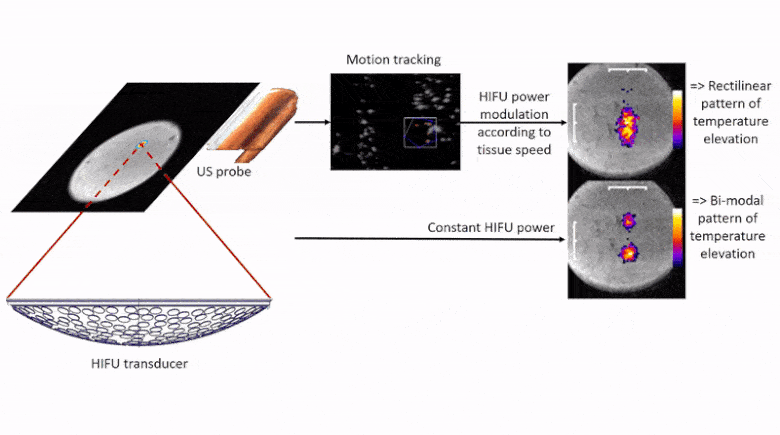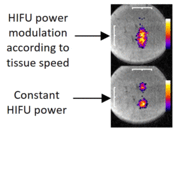
High Intensity Focused Ultrasound (HIFU) treatment in the abdominal cavity is challenging due to the respiratory motion. In the self-scanning HIFU ablation method the focal spot is kept static and the heating pattern is obtained through natural tissue motion. This paper describes a novel approach for modulating the HIFU power during self-scanning in order to compensate for the effect of tissue motion on thermal build-up. The therapy, using hybrid ultrasound (US) / magnetic resonance (MR) imaging, consists of detecting and tracking speckle on US images in order to predict the next tissue position, and modulating the HIFU power according to the tissue speed in order to obtain a rectilinear pattern of uniform temperature elevation. Experiments were conducted on ex vivo tissue subjected to a breathing-like motion generated by an MR-compatible robot and sonicated by a phased array HIFU transducer. US and MR data were free from interferences. For both periodic and non-periodic motion, MR temperature maps showed a substantial improvement in the uniformity of the temperature elevation by using acoustic power modulation. The presented method does not require a learning stage and enables a duty cycle close to 100%, higher average acoustic intensity and avoidance of side lobe effects versus performing HIFU beam steering to compensate tissue motion. To our knowledge, the proposed method provides the first experimental validation of the self-scanning HIFU ablation paradigm via a real-time hybrid MRI/US imaging, opening the path towards self-scanning in vivo therapies.

